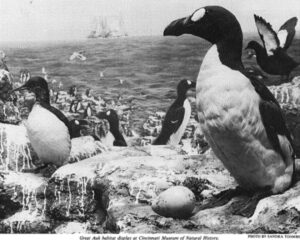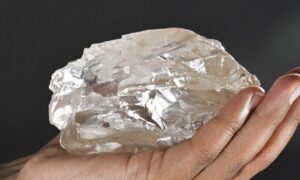Every day, approximately 17 meteorites hit the Earth. Near the city of Grootfontein in Namibia lies the world’s largest intact one. The Hoba meteorite, named after the farm on which it was discovered, crashed thousands of years ago. Due to its large mass, locals left it exactly where it struck.
A gift
In 1920, a landowner named Jacob Hermanus Brits was ploughing his field when he suddenly heard a loud clank. Underneath the soil, he found a large black rock. A team of workers excavated the rest of it to find tabular-shaped slab. Its large mass made it too heavy to move.
The meteorite — for that’s what it was — remains there to this day. It was called Hoba, after its location. The name Hoba also means “gift”, which it truly became to the people of Namibia. Now a national monument, the site now contains a museum and an amphitheater for visitors.

Hoba meteorite and amphitheater. Photo: Flickr
Age and composition
Scientists determined that this meteor came to Earth between 80,000 and 300,000 years ago. They date the rock’s age at 200 to 400 million years old. Flat on both sides, the Hoba meteorite measures approximately three meters long, three meters wide, and one meter thick. It weighs around 66,000 kilograms. That makes it about twice the size of Ahnighito, the largest of the Greenland meteorites, on display at the American Museum of Natural History.
There are three main types of meteorites out there in the vastness of space: iron, stony-iron, and stony. This particular meteor is called an ataxite iron meteorite. Ataxite refers to an iron meteorite that contains high concentrations of nickel as well. These meteorites are much rarer and do not have the Widmanstätten pattern, a characteristic geometrical pattern usually found in iron meteorites. This absence is due to the presence of nickel.

The Widmanstätten cross-hatching on a typical iron meteorite. Photo: Jerry Kobalenko
The Hoba contains 82-84% iron, 16% nickel, and low concentrations of elements like cobalt, copper, zinc, iridium, carbon, sulfur, germanium, gallium, and chromium. The high concentrations of nickel helped prevent the meteor from breaking down through erosion over the centuries. Nickel does not react with air like most other elements. You can also find great amounts of these elements in the surrounding soil. This suggests that Hoba was originally even bigger.

The Hoba meteorite. Photo: Peter Jupke/Pixabay
Iron meteorites are much stronger than stone ones and do not break up in the atmosphere as readily. According to one source, the Hoba meteorite entered the atmosphere at a very low angle, which greatly slowed it down before it struck the surface. Its tabular shape further slowed it to about 320 meters per second.
This is why its impact formed no crater. Scientists believe that the rock simply bounced and landed on its current location.
Preservation
Unfortunately, the Hoba meteorite has suffered from vandalism over the years. Before the establishment of the museum, the meteorite was out in the open without much supervision. It was vulnerable to those who came to cut pieces off and sell them illegally to collectors. You can find evidence of this vandalism on the rock, with its many scars and missing chunks.
However, some samples (legally acquired) reside safely in museums around the world, including the United States National Natural History Museum, the American Museum of Natural History, the Museum of Natural History in Paris, and the Harvard University Museum.
Conclusion
While Hoba still holds the title for our largest meteorite intact, there might be others out there that we have not found yet. Whether buried under ice or lying on the ocean floor, there may be many more meteorites that are even bigger.






